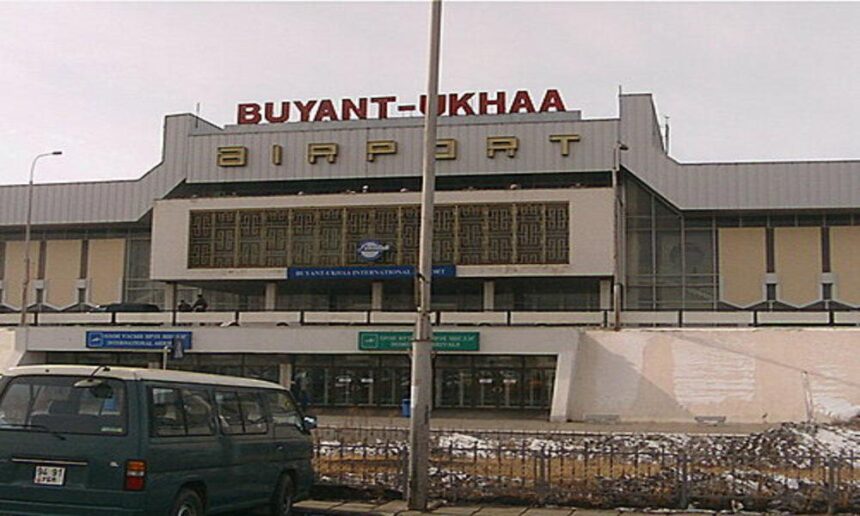In my column titled ‘Countless opportunities at Buyant Ukhaa’ last week, I used aircraft maintenance services as an example of many opportunities opened up at the Buyant Ukhaa airport as a new airport comes close to being commissioned in the Khushig Valley. This time I would like to elaborate on other opportunities.
Three years ago, a total of 20 billion MNT was invested into the Chinggis Khaan international airport (Buyant-Ukhaa) as part of preparations for the Asia-Europe Meeting (ASEM). This investment went to building a transit hall, constructing nine aprons, expanding the total area, and reinforcing 500 metres of paved tarmac. The total value of the Buyant Ukhaa airport stands at nearly 300 million USD (~750 billion MNT) today. So this capital must produce returns.
There is an opportunity to retain some of the civil aviation services and the existing infrastructure at the Buyant Ukhaa airport, and work proactively to meet emerging demands. However, if we don’t put some urgency into deciding what those services are going to be, the total cost of maintaining 480 hectares of facilities with all its infrastructure (heating, water, sewage…etc) would most definitely come from the 100 million USD centralised to the public budget each year from navigation services.
Besides aircraft maintenance, the Buyant Ukhaa airport can be used for more general aviation purposes, as a facility where an aviation school could be based and as a place to assemble small aircraft. If we get organised without wasting time and implement it with a determined vision, we would be able to increase the revenue from the aviation industry. It can take the form of a state-owned company initially, but to be turned public later on.
Opportunity around general aviation
Civil aviation has two major categories, one of which is scheduled air transport that includes all passenger and cargo flights operating on scheduled routes, and the other is general aviation. Mongolia can centralize scheduled passenger and cargo flights at the Khushig Valley, and general aviation at Buyant-Ukhaa.
We are seeing increasing demand for general aviation, including small aircraft flights and helicopter charter services for various reasons such as agricultural and construction surveying, photography, weather and meteorological research, medical and rescue missions, advertisements, aviation sports and training, and even leisure.
In 2017, mining charter flights to Oyu Tolgoi and Ovoot had a total of 216,000 passengers, which doubled the number of total passengers on local flights. However, the availability is smaller for flights that provide medical emergency support or immediate protection of the environment. It also goes without saying that the Mongolian military and law enforcement would always need aircraft and an airport.
Furthermore, we are currently unable to meet the demand for private and commercial flights, let alone, tourism and air taxis.
It is time to acknowledge that people are becoming increasingly interested in the private use of aircraft, hence the demand is growing. The most sensible location to keep such aircraft and fly them close to the capital city is Buyant Ukhaa. So we need to urgently determine standards and requirements for private aircraft and helicopters, develop relevant regulations, and install the required navigational systems that allows communication and tracking for short-distance flights.
Aviation training center
The International Civil Aviation Organization (ICAO) estimated that there was a total of 62,000 non-military aircraft globally in 2010, and the number would grow to 152,000 by 2030. What this means is that the growth will need to be fed by approximately 2 million aviation jobs, including pilots and maintenance workers. The existing training facilities are struggling to keep up with the ever increasing demand that continues growing year by year.
Forty-percent of this demand is accounted for by the Asia-Pacific region. By 2020, China’s general aviation fleet is expected to increase to 5,000 with 500 airports newly built. This would take their general aviation flight hours to 1.75 million. China is also dramatically increasing the production of smaller aircraft.
When it comes to aviation training, Mongolia has a geographical advantage where there is a clear sky for two thirds of the year and nearly all flying conditions can be simulated in between four seasons. Therefore, we have both the opportunity and the demand for setting up an aviation training center where pilots from our neighboring countries could come and practice.
China’s Ministry of Defence controls its airspace and provides a permit for every single civil flight, which makes it complicated to do training flights. So there is some interest in developing a pilot training school in Mongolia. It is said that, even though China needs to prepare thousands of pilots, they struggle to get the visas to the United Kingdom and the United States for training purposes.
Mongolia is also seeing an increased demand for civil aviation workers. We train our professionals both in-country and abroad. In the last six years, the Civil Aviation Authority of Mongolia spent 1.7 million USD sending 56 aviation trainees to countries such as the United States, Canada, Ukraine, Thailand, Russia and Australia.
We need to start setting up an internationally accepted training center at Buyant Ukhaa using its existing infrastructure and begin preparing pilots, engineers, and technicians in a methodical way. This center could be funded through an international project and initially operated by foreign experts, who we need to learn from. We could look into making it a branch school of an American or European school and bring their personnel to conduct training. We can start as a pilot practice facility and then morph into a fully equipped aviation school. Our vision should be setting up a facility that is accepted anywhere in the world.
Setting up an aviation training center would also have add-on effects, including the growth of the hospitality and service industry around the Buyant Ukhaa airport. This could also mean thousands of new jobs.
Assembled in Mongolia
Mongolia has an opportunity to set up a production and maintenance center for smaller aircraft. MIAT is working with Russia to trial assembly of older AN-2 aircraft in Mongolia. A newer model of this aircraft has been created in Novosibirsk.
This aircraft, which can take off from and land in many different conditions including water, snow, and soil, can fly 1,400 kilometers without making a stop and accommodates 12 people on board. It has been used in Mongolia for many years. Russia received an order of nearly 300 of these aircraft from Southeast Asian countries, but cannot currently supply them because of Western sanctions. Therefore, they offered that Mongolia co-assemble these aircrafts. So it is time for us to actively seek to start assembling the AN-2 or a similar Western competitor model.
Smaller aircraft are usually in high demand for countries like Mongolia that has a large territorial area, which makes paving roads less effective. We cannot sit idly bywhile the rest of the world sets the rules in making and operating aircrafts.
The authorities have both the duty and the responsibility to make smart decisions beneficial to the country in the longer term and to use these opportunities that Buyant Ukhaa offers, rather than seeking short term gains from building apartment blocks.
2018.08.08
Trans. by B.Amar












